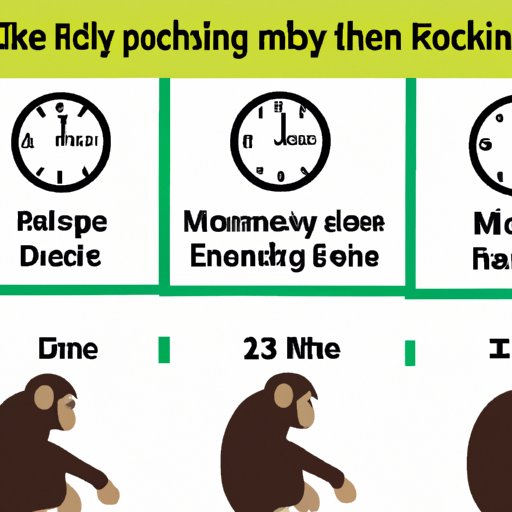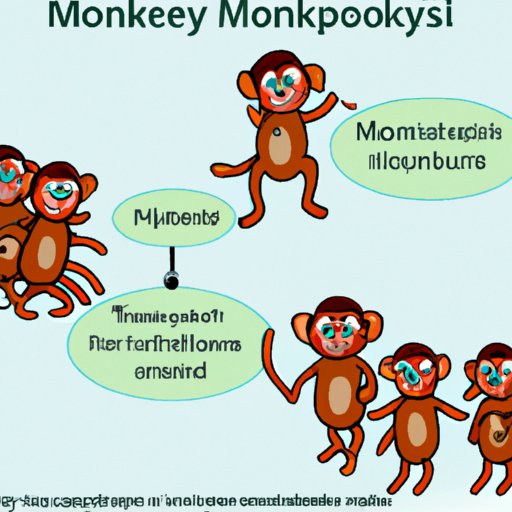
Exploring the Duration of Monkeypox Contagion
Monkeypox is an infectious disease caused by the monkeypox virus. It is similar to smallpox, but milder and less contagious. The virus primarily affects humans and animals in Central and West Africa, although it has been reported in other countries as well. Symptoms can range from mild to severe, and the disease can be fatal if left untreated. Understanding the duration of monkeypox contagion is essential for preventing the spread of this virus.
What is the Incubation Period?
The incubation period is the time between when a person is infected with the virus and when he or she starts to show symptoms. This can range from 5 to 21 days, depending on the individual’s immune system and other factors. During this time, the person may not know they are infected and could be spreading the virus to others without realizing it.
How Long Can You Spread Monkeypox?
The length of time a person can spread monkeypox varies depending on several factors. These include the type of virus, the person’s health, and the environment in which the virus is present. Generally, a person is most contagious during the first week of symptoms, but can still spread the virus for up to two weeks after the onset of symptoms.

The Length of Time You Can Spread Monkeypox
There are several factors that affect the length of time a person can spread monkeypox. The type of virus is one of the most important. For example, some strains of the virus can remain active and contagious for longer than others. In addition, a person’s overall health and the environment in which the virus is present can also play a role in the length of time a person can spread the virus.
Transmission of the virus occurs through direct contact with an infected person’s body fluids, such as saliva, mucus, blood, and feces. In addition, transmission can occur indirectly through contact with contaminated objects, such as bedding or clothing, or through airborne particles. The virus can also spread from animal to human, though this is rare.
How Long Is a Person Infected with Monkeypox Contagious?
A person infected with monkeypox is generally considered to be most contagious during the first week of symptoms. Symptoms of monkeypox typically begin with fever, headache, muscle aches, backache, swollen lymph nodes, chills, and exhaustion. Other symptoms may include a rash, sore throat, and coughing.
The length of time a person remains contagious depends on how long the virus remains active in the body. Generally, the virus can remain active and contagious for up to two weeks after the onset of symptoms. However, this can vary depending on the individual and the type of virus.

Understanding the Incubation and Contagious Period of Monkeypox
It is important to understand the incubation and contagious period of monkeypox in order to prevent its spread. During the incubation period, there are usually no symptoms, so a person may not even realize they are infected. However, once symptoms start to appear, the person is considered to be contagious and can spread the virus to others.
Risk factors for transmission of monkeypox include close contact with an infected person, contact with contaminated objects, and contact with wild animals. People who have weakened immune systems, such as those with HIV/AIDS, are also at higher risk of infection.
Tracking the Spread of Monkeypox: How Long Are You Contagious?
Tracking the spread of monkeypox is important in order to prevent its further spread. There are several methods of tracking, including contact tracing, laboratory testing, and surveillance. Contact tracing involves identifying and interviewing people who have been in close contact with an infected person, in order to determine if they have become infected as well. Laboratory testing involves taking samples from an infected person in order to identify the virus.
When someone is suspected of having monkeypox, it is important to seek medical attention immediately. A doctor can diagnose the condition and provide treatment to reduce the risk of the virus spreading to others.
The Duration of Monkeypox: How Long Can You Transmit It?
The length of time a person can transmit monkeypox can vary depending on the type of virus, the person’s health, and the environment in which the virus is present. Generally, a person is most contagious during the first week of symptoms, but can still spread the virus for up to two weeks after the onset of symptoms. It is important to take precautions to reduce the risk of transmission, such as avoiding close contact with an infected person, washing hands frequently, and avoiding contact with wild animals.
Prolonged contagion of monkeypox can lead to serious complications, such as encephalitis, meningitis, and even death. Therefore, it is important to seek medical attention immediately if you suspect you or someone you know may have been infected.
What to Know About the Length of Monkeypox Contagion
Understanding the duration of monkeypox contagion is essential for preventing its spread. The incubation period is the time between when a person is infected with the virus and when they start to show symptoms, which is usually 5 to 21 days. Once symptoms start to appear, the person is considered to be contagious and can spread the virus to others for up to two weeks. Risk factors for transmission include close contact with an infected person, contact with contaminated objects, and contact with wild animals.
It is important to take precautions to reduce the risk of transmission, such as avoiding close contact with an infected person, washing hands frequently, and avoiding contact with wild animals. If you suspect you or someone you know may have been infected, it is important to seek medical attention immediately.
Conclusion
Monkeypox is a highly contagious virus that can cause serious illness and even death if left untreated. Knowing the duration of monkeypox contagion is essential for preventing its spread. Generally, a person is most contagious during the first week of symptoms, but can still spread the virus for up to two weeks after the onset of symptoms. Taking precautions to reduce the risk of transmission, such as avoiding close contact with an infected person, washing hands frequently, and avoiding contact with wild animals, is the best way to prevent the spread of the virus.
(Note: Is this article not meeting your expectations? Do you have knowledge or insights to share? Unlock new opportunities and expand your reach by joining our authors team. Click Registration to join us and share your expertise with our readers.)
